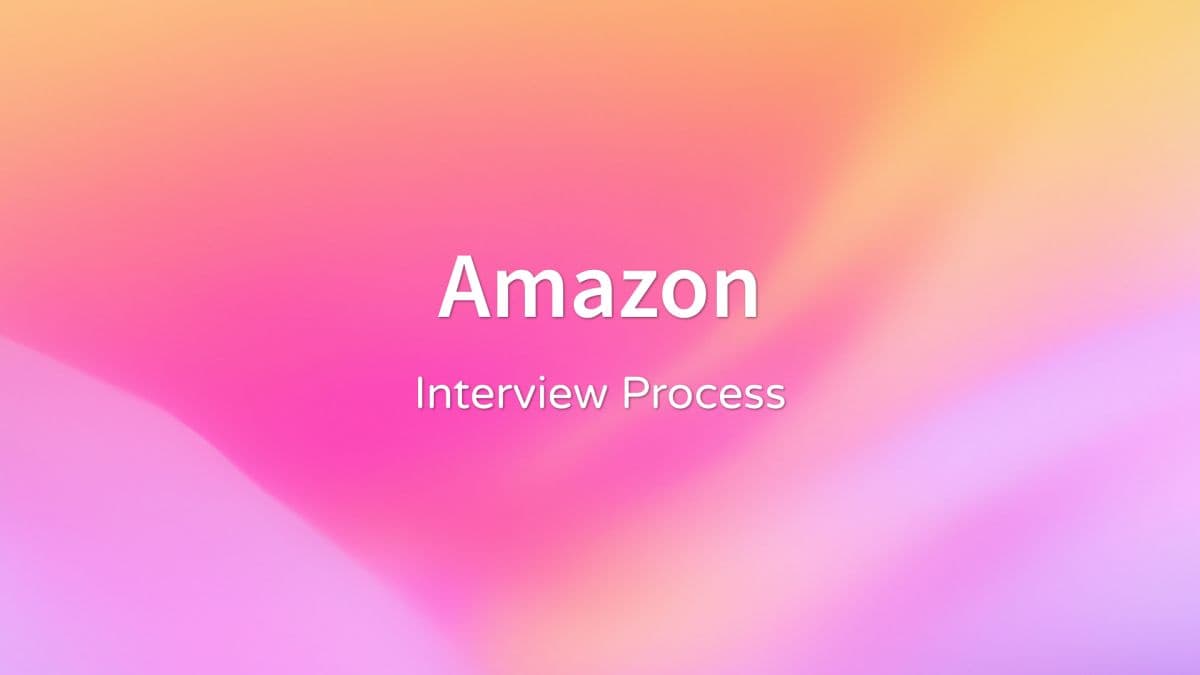Amazon's Interview Process (2025)
Blog / Amazon's Interview Process (2025)

The Amazon interview process is a well-defined big tech hiring pipeline that typically unfolds as follows:To prepare effectively, break your study plan into three key areas:1. Data Structures & Algorithms (DSA)Amazon places strong emphasis on problem-solving skills, often tested through LeetCode-style questions. The most efficient way to prepare is to focus on the most frequently asked problems, prioritizing medium and hard difficulty levels. Speed is crucial - aim to solve each question in under 20 to 25 minutes during practice. While clearly explaining your thought process is important, your main priority should be arriving at a correct, optimized solution efficiently.You can practice these high-impact questions using our most frequently asked Amazon questions to maximize your preparation.2. System DesignSystem design interviews at Amazon often focus on real-world, scalable systems directly tied to their business, such as designing Amazon’s e-commerce platform. Other common examples include URL shorteners and web crawlers. Interviewers will probe your understanding of trade-offs, scalability, and reliability - critical considerations for Amazon’s massive infrastructure. Be prepared to discuss networking concepts such load balancing, databases (SQL and NoSQL), caching strategies, and fault tolerance, demonstrating both technical depth and practical reasoning.To practice these skills and simulate real interview scenarios, you can use our AI System Design Whiteboard, which helps you refine your designs and effectively communicate your thought process.3. Behavioral questionsAmazon’s behavioral interviews are unique because they’re deeply rooted in the company’s 16 Leadership Principles (e.g., “Ownership,” “Dive Deep,” “Customer Obsession”). These can be grouped into three main themes:Practice using the STAR method (Situation, Task, Action, Result) to structure your responses concisely. To build confidence and refine your delivery, you can use our Behavioral Playbook, which provides practice questions and AI-assisted feedback for these types of behavioral interview questions.ConclusionWe’ve already compiled the most frequently asked behavioral questions across all three categories and provided detailed solutions for each right here. Reviewing these materials will help you prepare efficiently and make the most of your time, increasing your chances of performing well and securing an offer. For a structured, step-by-step approach to mastering every stage of the interview, follow our Amazon Interview Roadmap and take deliberate steps toward landing your offer.
- Recruiter Call: A conversation with a recruiter to discuss your experience, motivation, and alignment with Amazon’s values.
- Online Assessment (OA): A timed coding test, typically featuring two LeetCode-style DSA questions, designed to evaluate your problem-solving and algorithmic skills.
- Technical Interviews: Usually four to five rounds covering data structures and algorithms, system design, and occasionally language-specific questions. These interviews assess not only technical ability but also how you approach problems, communicate solutions, and handle trade-offs.
- Decision: Final evaluation emphasizes both technical performance and alignment with Amazon’s Leadership Principles, which play a central role in the hiring process.
- Data Structures & Algorithms (DSA)
- System Design
- Behavioral questions
- Amazon-Specific (e.g., “Tell me about a time you exemplified ‘Bias for Action’”)
- Problem-Solving (e.g., “Describe a situation where you had to solve a difficult problem with limited resources”)
- Teamwork & Leadership (e.g., “Give an example of when you influenced a team without formal authority”)
About TechPrep
TechPrep has helped thousands of engineers land their dream jobs in Big Tech and beyond. Covering 60+ topics, including coding and DSA challenges, system design write-ups, and interactive quizzes, TechPrep saves you time, builds your confidence, and makes technical interviews a breeze.